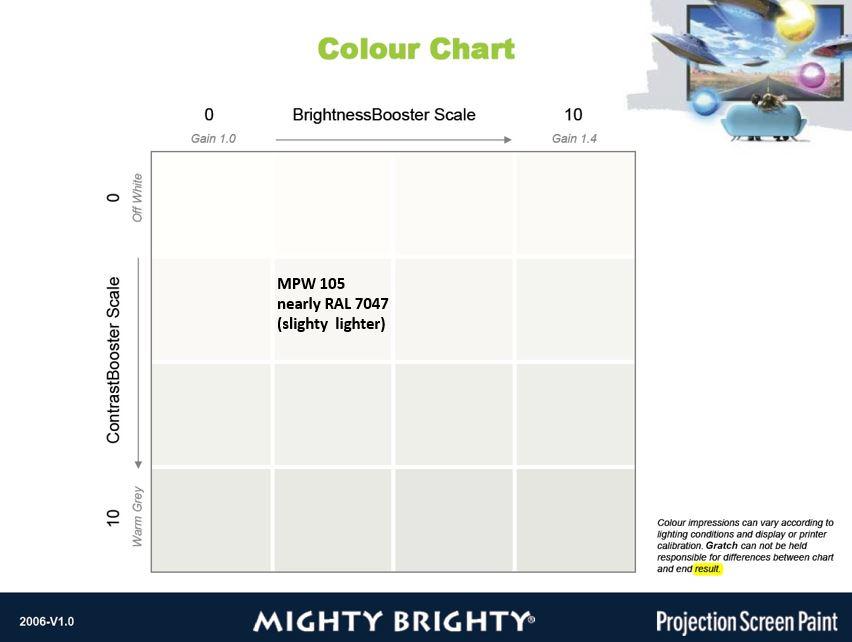What’s the color of a Mighty Brighty Projection Screen?
Answer: always a shade of grey! To obtain good contrast in the projected image, a shade of gray is needed. People often project onto a white wall with a beamer, you cannot achieve contrast on a white surface. Even if it would be completely dark in the projection room, the bright light of the beamer will not display an image with optimal contrast on a white wall. A regular projection screen that you have to roll out is not white either, but always a shade of gray or silver.
What color gray do the different Mighty Brighty projection screen packages have?
The MPW 105 package is based on the most common projection screen values and is ready for use. This screen, the Standard Projection Screen is therefore as most projection screens you can buy in the store. The color of this screen is fixed and is very light gray approximately RAL 7047 (actually slightly lighter than this RAL). The MPW 105 package has a contrast value of 2.5 and a gain value of approximately 1.1.
The MPW 20, MPW 225 and MPW 350 packages, the grayscale or contrast value is determined for the room in which the projection screen is used. With these packages, the color gray cannot be passed on in advance. If you are going to project in a very bright room with a beamer strong beamerlamps (more than 1750 Ansilumen), you need a ‘darker gray’ screen to still obtain contrast.
But the basic BaseCoat and TopCoat of the MPW 225 and the MPW 350 have the contrast and brightness values of the standard projection screen MPW 105.
The image below is a good indication of how gray the projection screen cam become. Both axes have a scale from 0 to 10. This indicates the number of parts of contrast liquid (contrast booster) and clarity liquid (brightness booster) to be added. To find out how much contrast and brightness fluid is needed, fill in 5 questions and add up the numbers of the answers. Question list Mighty Brighty.

